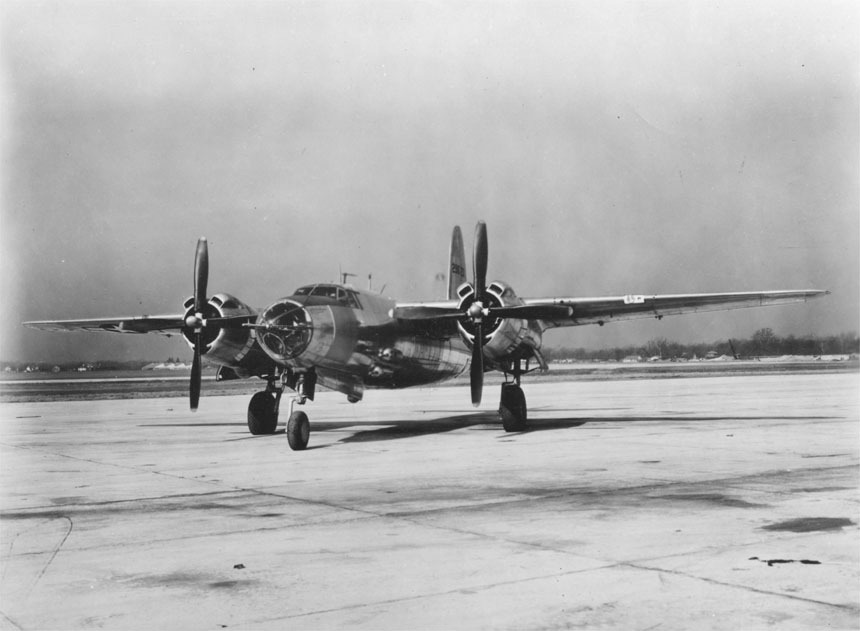History
By 1942, the B-26B/C Marauders were well established in production and combat, but Martin and the USAAF continued to pursue refinements to the design. In the fall of 1943, Martin proposed altering the wing’s angle of incidence to improve the type’s takeoff and landing performance, an area where the Marauder had earned a mixed reputation, such as the “Widow Killer.” The incidence was increased by 3.5 degrees, raising it to 7 degrees total. This small change granted several benefits: greater ground clearance for the propellers, reduced takeoff distance, lower stall and landing speeds, and improved lift. In practical terms, the modification shortened the takeoff run of a fully loaded B-26 by about 100 yards, reduced takeoff speed to 110 mph, and cut landing distance by one-quarter. However, the higher incidence gave the B-26F a tail-up attitude in level flight, slightly increasing drag and reducing top speed to 277 mph.
Nevertheless, the Army approved the change, and production of the B-26F-1-MA began at Martin’s Baltimore plant in February 1944. Beyond the wing modification, the B-26F-1 featured numerous refinements. It became the first Marauder variant to carry a centerline vent mast, located on top of the fuselage near the wing root. The fuel system was reworked: each engine had its own independent supply from two main wing tanks (360 gallons each) and two 121-gallon auxiliary tanks, with no cross-feed capability. The cockpit layout was improved with a redesigned instrument panel, while new lower wing access panels made maintenance easier for ground crews. An enlarged oval observation window in the nose Plexiglas was introduced, distinguishing the F model from earlier B/C variants. A tail bumper was added to protect the fuselage during takeoff and landing. One of the most important innovations was a new emergency landing gear system: if the hydraulics failed, the gear could now be mechanically released, allowing the wheels to drop into position by airflow. This greatly reduced the need for dangerous belly landings.
Armament changes were relatively minor. The long-obsolete torpedo shackles were removed, the nose-mounted fixed .50 caliber gun was deleted, and the bomb load was increased back up to the original 4,000 lb capacity. A new electric bomb release system improved reliability and reduced hang-ups in the bay.
The first B-26F-1-MA rolled out in February 1944, and 100 were completed under USAAF contract, all delivered in natural metal finish. Some were dispatched to the 12th Air Force in the Mediterranean, while the majority reinforced the 9th Air Force in Britain in May 1944. They entered combat over occupied Europe in June, supporting the Normandy landings and subsequent operations. Many were later field-camouflaged in olive drab with gray markings and yellow serials.
Production continued with the B-26F-2 and F-6, 200 aircraft destined for the RAF and South African Air Force, where they were designated Marauder III. These differed slightly from the USAAF B-26F-1, mainly in equipment: the Bell M-6 tail turret was replaced with the M-6A (with a canvas gun shroud), flexibly mounted guns were given optical sights, the Sperry T-1 bombsight was replaced with the M-series, and provision was made for British-style bomb shackles and fuses. Radio equipment was also adapted to RAF/SAAF standards.
Although produced in limited numbers, the B-26F-1 represented an improved Marauder that directly addressed the type’s hazardous takeoff and landing characteristics. Thanks to Martin’s refinements, it became a safer and more reliable medium bomber, contributing to improved crew survivability and lower loss rates in service.








